A Massage from Mang Bill Gates Sareng Ua Steve Jobs
Written by Quantum Study Club on 08.34Sudah banyak yang tahu kehebatan Bill Gates. Pendiri Microsoft Corporations ini menjadi manusia terkaya di planet ini selama 13 tahun berturut-turut. Tahun ini posisinya direbut Warren Buffet, karena ia ceroboh ingin mencaplok Yahoo!, sehingga nilai saham Microsoft melorot, dan kekayaan bersihnya pun ikut terpotong. Andai tidak melakukan langkah blunder itu, ia masih terkaya di dunia tahun ini. Tidak heran jika ia menjadi idola banyak orang, termasuk saya.
Fokusnya di dunia peranti lunak memang tak tergoyahkan. Sepanjang hidupnya, fokus bisnisnya hanya di satu bidang ini — atau yang berkaitan dengan peranti lunak, jasa dan solusi. Ia tak pernah menoleh sedikitpun ke bidang lain. Pria kelahiran 28 Oktober 1955 ini mampu membangun Micrsoft dari titik nol menjadi perusahaan dengan penjualan sebesar US$ 51,12 miliar alias sekitar Rp 500 triliun pada tahun fiskal Juni 2007. Itu artinya hampir setara dengan 70% belanja negara kita tahun ini.
Melalui payung Microsoft pula ia mampu menampung 78 ribu tenaga kerja yang tersebar di 105 negara. Melalui Microsoft pula ia mendominasi pasar peranti lunak dunia.
Dengan prestasi yang sedemikian hebat, tidak mengherankan jika kedatangannya di Indonesia pekan lalu disambut meriah. Kuliah umumnya berjudul ‘Second Digital Decade’ yang digelar di Plenary Hall Jakarta Convention Center, Jumat 9 Mei lalu, dihadiri 2.500 orang, mulai dari presiden, menteri kabinet, pengusaha, profesional hingga mahasiswa. Masih ribuan lagi lainnya yang terpaksa gigit jari karena kehabisan tiket untuk mengikuti kuliah umum itu.
Ada satu hal penting yang disampaikan Bill Gates mengenai pendidikan pada kuliah umum itu. “Semua anak (pelajar) harus menyelesaikan pendidikan, untuk itu perlu semua pihak termasuk pemerintahan anda, harus turun tangan untuk itu,” kata Bill Gates, yang disambut tepuk tangan hadirin. Bahkan pada saat sesi tanya jawab, Bill Gates secara tegas menyarankan agar para mahasiswa tidak meniru dirinya,yang DO di tengah jalan meski sempat kuliah di Harvard University.
“Selesaikan kuliah Anda dan raihlah gelar akademis,” katanya.
Bagaimanapun juga, kuliah adalah saat yang paling tepat untuk memenuhi segala keingintahuan mahasiswa. Dan jika ingin menjadi pengusaha, gunakanlah kesempatan magang di perusahaan secara maksimal.
“Saya ini contoh yang buruk,” katanya seperti dikutip Detikcom.

Selama ini, saya sering membaca kesalahpahaman banyak orang yang ingin menjadi pengusaha dengan mengorbankan kuliah. “Bill Gates yang nggak lulus kuliah saja bisa jadi yang terkaya di dunia,” kira-kira begitulah alasan mereka. Bahkan mereka bisa memberikan banyak contoh orang yang sukses di dunia usaha tanpa embel-embel sarjana. Larry Allison — pendiri Oracle Corporation — misalnya, adalah mahasiswa gagal. Steven Spielberg, sutradara film-film box office dunia, juga putus kuliah. Mark Zuckerberg, pendiri Facebook, sang triliuner baru yang baru berumur 23 tahun, juga tak menyelesaikan kuliahnya di Harvard University.
Kenyataan di atas kadang malah digunakan sebagai lelucon: bahwa mereka yang pintar secara akademis tidak akan sukses di dunia usaha. Mereka yang pintar dan lulus sarjana malah menjadi jongos orang-orang “bodoh” yang tidak lulus kuliah.
Memang, mereka yang tidak memiliki gelar sarjana tetap berpeluang menjadi pengusaha sukses. Namun bukan berarti bahwa mengorbankan kuliah merupakan tiket menuju sukses. Bahkan, jika dilakukan penelitian, kemungkinan sarjana yang sukses menjadi pengusaha amat banyak. Namun, karena sarjana sukses berusaha dianggap sebagai hal yang biasa, tidak banyak media yang mengulasnya. Lebih menarik mengupas tokoh-tokoh sukses yang latarbelakangnya menderita atau kurang bagus — termasuk tidak lulus kuliah. Ini yang bisa menimbulkan persepsi sesat bahwa DO adalah ciri pengusaha sukses.
Bill Gates sudah menyampaikan dengan jelas, bahwa dirinya adalah contoh yang buruk dalam hal akademis. Sesungguhnya ia sangat ingin menggondol gelar sarjana. Simak bagaimana pidatonya setelah ia menerima gelar sarjana kehormatan dari Harvard University tahun lalu:
“Sudah lebih dari 30 tahun saya menunggu untuk mengatakan ini, ‘Ayah, saya selalu bilang saya akan kembali (ke kampus) dan meraih gelar.’ Tahun depan (2008) saya akan ganti pekerjaan. Merupakan sesuatu yang menyenangkan bahwa bisa mencantumkan gelar sarjana di daftar riwayat hidup.”
Benar, ia kini telah berganti pekerjaan. Ia sudah mundur dari manajemen Microsoft, dan “hanya” menjadi chairman. Waktunya lebih banyak didedikasikan ke Yayasan “Bill and Melinda Gates” yang didirikan tahun 2000 dengan tujuan membantu proyek-proyek peningkatan kesehatan, pengurangan kemiskinan, dan proyek yang memperluas akses masyarakat kepada teknologi.
Ucapan Bill Gates menyiratkan sesuatu, yang kira-kira seperti ini:
“Contohlah saya, tapi jangan di sisi akademis.”
Bill Gates
From Wikipedia
| Bill Gates | |
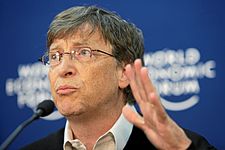 Bill Gates at the World Economic Forum in Davos, 2008 | |
| Born | October 28, 1955 Seattle, Washington |
|---|---|
| Residence | |
| Alma mater | Harvard University (dropped out in 1975, honorary degree in 2007)[1] |
| Occupation | Chairman of Microsoft Co-Chair of Bill & Melinda Gates Foundation |
| Net worth | ▲US$58 billion (2008)[2] |
| Spouse(s) | Melinda Gates (1994–present) |
| Children | Jennifer Katharine Gates (1996), Rory John Gates (1999) and Phoebe Adele Gates (2002) |
| Signature | |
| Website Bill Gates | |
William Henry "Bill" Gates III (born October 28, 1955)[3] is an American business magnate, philanthropist, the world's third richest person (as of February 8, 2008),[2] the richest American (as of September 17, 2008),[4] and chairman[5] of Microsoft, the software company he founded with Paul Allen. During his career at Microsoft, Gates held the positions of CEO and chief software architect, and remains the largest individual shareholder with more than 8 percent of the common stock.[6] He has also authored or co-authored several books.
Gates is one of the best-known entrepreneurs of the personal computer revolution. Although he is admired by many, a large number of industry insiders criticize his business tactics, which they consider anti-competitive, an opinion which has in some cases been upheld by the courts.[7][8] In the later stages of his career, Gates has pursued a number of philanthropic endeavors, donating large amounts of money to various charitable organizations and scientific research programs through the Bill & Melinda Gates Foundation, established in 2000.
Bill Gates stepped down as chief executive officer of Microsoft in January, 2000. He remained as chairman and created the position of chief software architect. In June, 2006, Gates announced that he would be transitioning from full-time work at Microsoft to part-time work at Microsoft and full-time work at the Bill & Melinda Gates Foundation. He gradually transferred his duties to Ray Ozzie, chief software architect and Craig Mundie, chief research and strategy officer. Gates's last full-time day at Microsoft was June 27, 2008. He remains at Microsoft as a part-time, non-executive chairman.
Contents |
Early life
Gates was born in Seattle, Washington, to William H. Gates, Sr. and Mary Maxwell Gates. His family was upper middle class; his father was a prominent lawyer, his mother served on the board of directors for First Interstate BancSystem and the United Way, and her father, J. W. Maxwell, was a national bank president. Gates has one older sister, Kristi (Kristianne), and one younger sister, Libby. He was the fourth of his name in his family, but was known as William Gates III or "Trey" because his father had dropped his own "III" suffix.[9] Early on in his life, Gates's parents had a law career in mind for him.[10]
At thirteen he enrolled in the Lakeside School, an exclusive preparatory school.[11] When he was in the eighth grade, the Mothers Club at the school used proceeds from Lakeside School's rummage sale to buy an ASR-33 teletype terminal and a block of computer time on a General Electric (GE) computer for the school's students.[12] Gates took an interest in programming the GE system in BASIC and was excused from math classes to pursue his interest. He wrote his first computer program on this machine: an implementation of tic-tac-toe that allowed users to play games against the computer. Gates was fascinated by the machine and how it would always execute software code perfectly. When he reflected back on that moment, he commented on it and said, "There was just something neat about the machine."[13] After the Mothers Club donation was exhausted, he and other students sought time on systems including DEC PDP minicomputers. One of these systems was a PDP-10 belonging to Computer Center Corporation (CCC), which banned four Lakeside students—Gates, Paul Allen, Ric Weiland, and Kent Evans—for the summer after it caught them exploiting bugs in the operating system to obtain free computer time.[14]
At the end of the ban, the four students offered to find bugs in CCC's software in exchange for computer time. Rather than use the system via teletype, Gates went to CCC's offices and studied source code for various programs that ran on the system, including programs in FORTRAN, LISP, and machine language. The arrangement with CCC continued until 1970, when it went out of business. The following year, Information Sciences Inc. hired the four Lakeside students to write a payroll program in COBOL, providing them computer time and royalties. After his administrators became aware of his programming abilities, Gates wrote the school's computer program to schedule students in classes. He modified the code so that he was placed in classes with mostly female students. He later stated that "it was hard to tear myself away from a machine at which I could so unambiguously demonstrate success."[13] At age 17, Gates formed a venture with Allen, called Traf-O-Data, to make traffic counters based on the Intel 8008 processor.[15]
Gates graduated from Lakeside School in 1973. He scored 1590 out of 1600 on the Scholastic Aptitude Test[16] and subsequently enrolled at Harvard College in the fall of 1973.[17] Prior to the mid 1990s, an SAT score of 1590 was equivalent to an IQ of about 170 (roughly the one in a million level)[18], a figure that would frequently be cited by the press[19]. While at Harvard, he met his future business partner, Steve Ballmer, whom he later appointed as CEO of Microsoft. He also met computer scientist Christos Papadimitriou at Harvard, with whom he collaborated on a paper about algorithms.[20] He did not have a definite study plan while a student at Harvard[21] and spent a lot of time using the school's computers. He remained in contact with Paul Allen, joining him at Honeywell during the summer of 1974.[22] The following year saw the release of the MITS Altair 8800 based on the Intel 8080 CPU, and Gates and Allen saw this as the opportunity to start their own computer software company.[23] He had talked this decision over with his parents, who were supportive of him after seeing how much Gates wanted to start a company.[21]
Microsoft
BASIC
After reading the January 1975 issue of Popular Electronics that demonstrated the Altair 8800, Gates contacted Micro Instrumentation and Telemetry Systems (MITS), the creators of the new microcomputer, to inform them that he and others were working on a BASIC interpreter for the platform.[24] In reality, Gates and Allen did not have an Altair and had not written code for it; they merely wanted to gauge MITS's interest. MITS president Ed Roberts agreed to meet them for a demo, and over the course of a few weeks they developed an Altair emulator that ran on a minicomputer, and then the BASIC interpreter. The demonstration, held at MITS's offices in Albuquerque, was a success and resulted in a deal with MITS to distribute the interpreter as Altair BASIC. Paul Allen was hired into MITS,[25] and Gates took a leave of absence from Harvard to work with Allen at MITS in Albuquerque in November 1975. They named their partnership "Micro-soft" and had their first office located in Albuquerque.[25] Within a year, the hyphen was dropped, and on November 26, 1976, the trade name "Microsoft" was registered with the USPTO.[25]
Microsoft's BASIC was popular with computer hobbyists, but Gates discovered that a pre-market copy had leaked into the community and was being widely copied and distributed. In February 1976, Gates wrote an Open Letter to Hobbyists in the MITS newsletter saying that MITS could not continue to produce, distribute, and maintain high-quality software without payment.[26] This letter was unpopular with many computer hobbyists, but Gates persisted in his belief that software developers should be able to demand payment. Microsoft became independent of MITS in late 1976, and it continued to develop programming language software for various systems.[25] The company moved from Albuquerque to its new home in Bellevue, Washington on January 1, 1979.[24]
During Microsoft's early years, all employees had broad responsibility for the company's business. Gates oversaw the business details, but continued to write code as well. In the first five years, he personally reviewed every line of code the company shipped, and often rewrote parts of it as he saw fit.[27]
IBM partnership
In 1980 IBM approached Microsoft to make the BASIC interpreter for its upcoming personal computer, the IBM PC. When IBM's representatives mentioned that they needed an operating system, Gates referred them to Digital Research (DRI), makers of the widely used CP/M operating system.[28] IBM's discussions with Digital Research went poorly, and they did not reach a licensing agreement. IBM representative Jack Sams mentioned the licensing difficulties during a subsequent meeting with Gates and told him to get an acceptable operating system. A few weeks later Gates proposed using 86-DOS (QDOS), an operating system similar to CP/M that Tim Paterson of Seattle Computer Products had made for hardware similar to the PC. Microsoft made a deal with SCP to become the exclusive licensing agent, and later the full owner, of 86-DOS. After adapting the operating system for the PC, Microsoft delivered it to IBM as PC-DOS in exchange for a one-time fee of $50,000. Gates insisted that IBM let Microsoft keep the copyright on the operating system, because he believed that other hardware vendors would clone IBM's system.[29] They did, and the sales of MS-DOS made Microsoft a major player in the industry.[30]
Windows
Gates oversaw Microsoft's company restructuring on June 25, 1981, which re-incorporated the company in Washington and made Gates President of Microsoft and the Chairman of the Board.[24] Microsoft launched its first retail version of Microsoft Windows on November 20, 1985, and in August, the company struck a deal with IBM to develop a separate operating system called OS/2. Although the two companies successfully developed the first version of the new system, mounting creative differences undermined the partnership. Gates distributed an internal memo on May 16, 1991 announcing that the OS/2 partnership was over and Microsoft would shift its efforts to the Windows NT kernel development.[31]
Management style
From Microsoft's founding in 1975 until 2006, Gates had primary responsibility for the company's product strategy. He aggressively broadened the company's range of products, and wherever Microsoft achieved a dominant position he vigorously defended it.
As an executive, Gates met regularly with Microsoft's senior managers and program managers. Firsthand accounts of these meetings describe him as verbally combative, berating managers for perceived holes in their business strategies or proposals that placed the company's long-term interests at risk.[32] He often interrupted presentations with such comments as, "That's the stupidest thing I've ever heard!"[33] and, "Why don't you just give up your options and join the Peace Corps?"[34] The target of his outburst then had to defend the proposal in detail until, hopefully, Gates was fully convinced.[33] When subordinates appeared to be procrastinating, he was known to remark sarcastically, "I'll do it over the weekend."[5][35][36]
Gates's role at Microsoft for most of its history was primarily a management and executive role. However, he was an active software developer in the early years, particularly on the company's programming language products. He has not officially been on a development team since working on the TRS-80 Model 100 line, but wrote code as late as 1989 that shipped in the company's products.[35] On June 15, 2006, Gates announced that he would transition out of his day-to-day role over the next two years to dedicate more time to philanthropy. He divided his responsibilities between two successors, placing Ray Ozzie in charge of day-to-day management and Craig Mundie in charge of long-term product strategy.[37]
Antitrust law violations
- Further information: United States Microsoft antitrust case and European Union Microsoft competition case
Many decisions that led to antitrust litigation over Microsoft's business practices have had Gates's approval. In the 1998 United States v. Microsoft case, Gates gave deposition testimony that several journalists characterized as evasive. He argued with examiner David Boies over the contextual meaning of words like "compete," "concerned," and "we."[38] BusinessWeek reported:
Early rounds of his deposition show him offering obfuscatory answers and saying 'I don't recall,' so many times that even the presiding judge had to chuckle. Worse, many of the technology chief's denials and pleas of ignorance were directly refuted by prosecutors with snippets of e-mail Gates both sent and received.[39]
Gates later said that he had simply resisted attempts by Boies to mischaracterize his words and actions. As to his demeanor during the deposition, he said, "Did I fence with Boies? ... I plead guilty. Whatever that penalty is should be levied against me: rudeness to Boies in the first degree."[40] Despite Gates's denials, the judge ruled that Microsoft had committed monopolization and tying, blocking competition, in violation of the Sherman Antitrust Act.[40]
The European Union Microsoft competition case is also a case brought by the European Commission of the European Union (EU) against Microsoft for abuse of its dominant position in the market (according to competition law). It started as a complaint from Novell over Microsoft's licensing practices in 1993, and eventually resulted in the EU ordering Microsoft to divulge certain information about its server products and release a version of Microsoft Windows without Windows Media Player.
Appearance in ads
Bill Gates decided in 2008 to appear in at least 1 commercial in a series of ads to promote Microsoft. This commercial, co-starring Jerry Seinfeld, is a 1 and a half minute talk between strangers as Seinfeld walks up on a discount shoe store (Shoe Circus) in a mall and notices Bill Gates buying shoes inside. The salesman is trying to sell Mr. Gates shoes that are a size too big. Mr. Seinfeld begins to inform him about a pair of shoes called Conquistadors that run "a little tight" and sells him on them in a size 10 (whereas the store clerk was attempting an 11). As Mr. Gates is buying the shoes he holds up his discount card, this card uses a slightly altered version of his own mugshot of his arrest in New Mexico in 1977 for a traffic violation [41]. As they are walking out of the mall, Jerry Seinfeld asks Bill Gates if he has melded his mind to other developers, after getting a yes, he then asks if they are working on a way to make computers edible, again getting a yes. Most critics are still in debate over the exact meaning of this commercial saying that it is too vague to make sense to them. Though some say that it is an homage to Mr. Seinfeld's own show about "nothing"(Seinfeld). [42]
Personal life
Gates married Melinda Gates (née French) from Dallas, Texas on January 1, 1994. They have three children: Jennifer Katharine(1996), Rory John(1999) and Phoebe Adele(2002). Bill Gates' house is a 21st century earth-sheltered home in the side of a hill overlooking Lake Washington in Medina, Washington. According to King County public records, as of 2006, the total assessed value of the property (land and house) is $125 million, and the annual property tax is $991,000. Also among Gates's private acquisitions is the Codex Leicester, a collection of writings by Leonardo da Vinci, which Gates bought for $30.8 million at an auction in 1994.[43] Gates is also known as an avid reader, and the ceiling of his large home library is engraved with a quotation from The Great Gatsby.[44] He also enjoys playing bridge, tennis, and golf.[45][46]
Gates was number one on the "Forbes 400" list from 1993 through to 2007 and number one on Forbes list of "The World's Richest People" from 1995 to 2007. In 1999, Gates's wealth briefly surpassed $101 billion, causing the media to call him a "centibillionaire".[47] Since 2000, the nominal value of his Microsoft holdings has declined due to a fall in Microsoft's stock price after the dot-com bubble burst and the multi-billion dollar donations he has made to his charitable foundations. In a May 2006 interview, Gates commented that he wished that he were not the richest man in the world because he disliked the attention it brought.[48] Gates has several investments outside Microsoft, which in 2006 paid him a salary of $616,667, and $350,000 bonus totalling $966,667.[49] He founded Corbis, a digital imaging company, in 1989. In 2004 he became a director of Berkshire Hathaway, the investment company headed by long-time friend Warren Buffett.[50]
Philanthropy
- Further information: Bill & Melinda Gates Foundation
Gates began to realize the expectations others had of him when public opinion mounted that he could give more of his wealth to charity. Gates studied the work of Andrew Carnegie and John D. Rockefeller and in 1994 sold some of his Microsoft stock to create the William H. Gates Foundation. In 2000, Gates and his wife combined three family foundations into one to create the charitable Bill & Melinda Gates Foundation, which is the largest transparently operated charitable foundation in the world.[51] The foundation is setup to allow benefactors access how its money is being spent, unlike other major charitable organizations such as the Wellcome Trust.[52][53] The generosity and extensive philanthropy of David Rockefeller has been credited as a major influence. Gates and his father have met with Rockefeller several times and have modeled their giving in part on the Rockefeller family's philanthropic focus, namely those global problems that are ignored by governments and other organizations.[54] As of 2007 Bill and Melinda Gates were the second most generous philanthropist in America, having given over $28 billion to charity.[55]
The foundation has also received criticism because it invests the assets that it has not yet distributed, with the exclusive goal of maximizing the return on investment. As a result, its investments include companies that have been criticized for worsening poverty in the same developing countries where the Foundation is attempting to relieve poverty. These include companies that pollute heavily and pharmaceutical companies that do not sell into the developing world.[56] In response to press criticism, the foundation announced in 2007 a review of its investments to assess social responsibility.[57] It subsequently cancelled the review and stood by its policy of investing for maximum return, while using voting rights to influence company practices.[58]
Recognition
Time magazine named Gates one of the 100 people who most influenced the 20th century, as well as one of the 100 most influential people of 2004, 2005, and 2006. Time also collectively named Gates, his wife Melinda and alternative rock band U2's lead singer Bono as the 2005 Persons of the Year for their humanitarian efforts.[59] In 2006, he was voted eighth in the list of "Heroes of our time".[60] Gates was listed in the Sunday Times power list in 1999, named CEO of the year by Chief Executive Officers magazine in 1994, ranked number one in the "Top 50 Cyber Elite" by Time in 1998, ranked number two in the Upside Elite 100 in 1999 and was included in The Guardian as one of the "Top 100 influential people in media" in 2001.[61]
Gates has received honorary doctorates from Nyenrode Business Universiteit, Breukelen, The Netherlands in 2000,[62] the Royal Institute of Technology, Stockholm, Sweden in 2002, Waseda University, Tokyo, Japan in 2005, Harvard University in June 2007,[63] and from Karolinska Institutet, Stockholm, in January 2008.[64] Gates was also made an honorary Knight Commander of the Order of the British Empire (KBE) from Queen Elizabeth II in 2005,[65] in addition to having entomologists name the Bill Gates flower fly, Eristalis gatesi, in his honor.[66]
In November 2006, he and his wife were awarded the Order of the Aztec Eagle for their philanthropic work around the world in the areas of health and education, particularly in Mexico, and specifically in the program "Un país de lectores".[67]
Investments
- Cascade Investments LLC, a private investment and holding company, incorporated in United States, is controlled by Bill Gates, and is headquartered in the city of Kirkland, WA.
- Sapphire Energy, a company working to turn algae to fuel, is financed by Bill Gates[68].
Bibliography
Gates has authored two books:
- The Road Ahead (1995)
- Business @ the Speed of Thought (1999)
Notes
- ^ Lombardi, Candace (2007-06-08). "Bill Gates "graduates" from Harvard 30 years after dropping out", CNET News.com. Retrieved on 2008-08-04.
- ^ a b "The World's Billionaires #3 William Gates III". Forbes (2008-03-05). Retrieved on 2008-03-06.
- ^ (Manes 1994, p. 11)
- ^ "The 400 Richest Americans #1 William Gates III". Forbes (2008-09-17). Retrieved on 2008-09-20.
- ^ a b Chapman, Glenn (2008-06-27). "Bill Gates Signs Off", Agence France-Presse.
- ^ Gates regularly documents his share ownership through public SEC form 4 filings.
- ^ (Manes 1994, p. 459)
- ^ (Lesinski 2006, p. 96)
- ^ (Manes 1994, p. 15)
- ^ (Manes 1994, p. 47)
- ^ (Manes 1994, p. 24)
- ^ (Manes 1994, p. 27)
- ^ a b (Gates 1996, p. 12)
- ^ (Manes 1994, p. 34)
- ^ (Gates 1996, p. 14)
- ^ (Lesinski 2006, p. 25)
- ^ (Gates 1996, p. 15)
- ^ http://www.eskimo.com/~miyaguch/MCReport/mcreport.html
- ^ http://www.forbes.com/forbes/1997/1013/6008040a_2.html
- ^ Gates, William (1979). "Bounds for sorting by prefix reversal". Discrete mathematics 27: 47–57. doi:.
- ^ a b (Gates 1996, p. 19)
- ^ (Wallace & 1993 59)
- ^ (Gates 1996, p. 18)
- ^ a b c . "Microsoft Visitor Center Student Information: Key Events in Microsoft History" (.DOC). Microsoft. Retrieved on 2008-02-18.
- ^ a b c d "Microsoft history". The History of Computing Project. Retrieved on 2008-03-31.
- ^ (Manes 1994, p. 81)
- ^ Gates, Bill. "Remarks by Bill Gates" Waterloo, Ontario (2005-10-13). Retrieved on 2008-03-31.
- ^ Maiello, John Steele Gordon Michael (2002-12-23). "Pioneers Die Broke". Forbes. Retrieved on 2008-03-31.
- ^ (Gates 1996, p. 54)
- ^ (Manes 1994, p. 193)
- ^ "May 16, 1991 internal strategies memo from Bill Gates". Bralyn. Retrieved on 2008-04-04.
- ^ Ballmer, Steve (1997-10-09). "Steve Ballmer Speech Transcript — Church Hill Club". Microsoft. Retrieved on 2008-03-31.
- ^ a b Isaacson, Walter (1997-01-13). "The Gates Operating System". Time. Retrieved on 2008-03-31.
- ^ Bank, David (1999-02-01). "Breaking Windows". The Wall Street Journal. Retrieved on 2008-03-31.
- ^ a b Gates, Bill. "Remarks by Bill Gates" San Diego, California (1997-09-26). Retrieved on 2008-03-31.
- ^ Herbold, Robert (2004). The Fiefdom Syndrome: The Turf Battles That Undermine Careers and Companies - And How to Overcome Them.
- ^ "Microsoft Announces Plans for July 2008 Transition for Bill Gates", Microsoft (2006-06-15).
- ^ "Gates deposition makes judge laugh in court". CNN (1998-11-17). Retrieved on 2008-03-30.
- ^ "Microsoft's Teflon Bill". BusinessWeek (1998-11-30). Retrieved on 2008-03-30.
- ^ a b Heilemann, John (2000-11-01). "The Truth, The Whole Truth, and Nothing But The Truth". Wired. doi:. PMID 18509686. Retrieved on 2008-03-31.
- ^ http://www.thesmokinggun.com/mugshots/gatesmug1.html
- ^ http://adblog.msnbc.msn.com/archive/2008/09/08/1362333.aspx
- ^ (Lesinski 2006, p. 74)
- ^ Paterson, Thane (2000-06-13). "Advice for Bill Gates: A Little Culture Wouldn't Hurt", Business Week. Retrieved on 2008-04-28.
- ^ "Bill Gates: Chairman". Microsoft Corporation (2008).
- ^ "Profile: Bill Gates". BBC news (2004).
- ^ (Fridson 2001, p. 113)
- ^ Bolger, Joe (2006-05-05). "I wish I was not the richest man in the world, says Bill Gates", The Times. Retrieved on 2008-03-31.
- ^ "Microsoft 2006 Proxy Statement". Microsoft (2007-10-06). Retrieved on 2008-02-14.
- ^ Fried, Ina (2004-12-14). "Gates joins board of Buffett's Berkshire Hathaway", CNET. Retrieved on 2008-03-31.
- ^ "Flat-pack accounting". The Economist (2006-05-11). Retrieved on 2008-04-01.
- ^ Cronin, Jon (2005-01-25). "Bill Gates: billionaire philanthropist". BBC News. Retrieved on 2008-04-01.
- ^ "Our Approach to Giving". Bill & Melinda Gates Foundation. Retrieved on 2008-04-01.
- ^ (2006-01-01). "2005 Annual Report" (.PDF). Rockefeller Brothers Fund. Retrieved on 2008-02-14.
- ^ The 50 most generous Americans
- ^ Dark cloud over good works of Gates Foundation, Los Angeles Times, 7 January 2006
- ^ Gates Foundation to review investments, The Seattle Times, 10 January 2007
- ^ Gates Foundation to maintain its investment plan, The Austin Statesman, 14 January 2007
- ^ (Lesinski 2006, p. 102)
- ^ Cowley, Jason (2006-06-22). "Heroes of our time — the top 50", New Statesman. Retrieved on 2008-02-17.
- ^ "Gates 'second only to Blair'". BBC News (1999-09-26). Retrieved on 2008-03-30.
- ^ Nyenrode Business Universiteit (2003-08-13). "Eredoctoraat Universiteit Nyenrode voor Wim Kok" (in Dutch). Press release. Retrieved on 2008-02-18.
- ^ Hughes, Gina (2007-06-08). "Bill Gates Gets Degree After 30 Years", Yahoo!. Retrieved on 2008-02-18.
- ^ Svärd, Madeleine (2008-01-24). "Bill Gates honored with a doctor's cap". Karolinska Institutet. Retrieved on 2008-02-18.
- ^ "Knighthood for Microsoft's Gates", BBC News (2005-03-02). Retrieved on 2008-02-18.
- ^ Thompson, F. Christian (1999-08-19). "Bill Gates' Flower Fly Eristalis gatesi Thompson". The Diptera Site. Retrieved on 2008-02-18.
- ^ "Proclamation of the Award". Diario Oficial de la Federación. Retrieved on 2008-03-30.
- ^ http://www.redherring.com/Home/24989
References
- Fridson, Martin (2001), How to be a Billionaire: Proven Strategies from the Titans of Wealth, John Wiley & Sons, ISBN 0471416177
- Gates, Bill (1996), The Road Ahead, Penguin Books, ISBN 0140260404
- Lesinski, Jeanne M. (2006), Bill Gates (Biography (a & E)), A&E Television Networks, ISBN 0822570270
- Manes, Stephen (1994), Gates: How Microsoft's Mogul Reinvented an Industry and Made Himself The Richest Man in America, Touchstone Pictures, ISBN 0671880748
- Wallace, James (1993), Hard Drive: Bill Gates and the Making of the Microsoft Empire, New York: HarperCollins Publishers
External links
| Find more about Bill Gates on Wikipedia's sister projects: | |
|---|---|
| Dictionary definitions | |
| Textbooks | |
| Quotations | |
| Source texts | |
| Images and media | |
| News stories | |
| Learning resources | |
- Biography of Bill Gates at Microsoft.com
- Forbes: World's Richest People
- Bill & Melinda Gates Foundation
| Honorary titles | ||
|---|---|---|
| Preceded by Warren Buffett | World's Richest Person 1996–2007 | Succeeded by Warren Buffett |
| ||
| ||
| Persondata | |
|---|---|
| NAME | Gates, William Henry, III |
| ALTERNATIVE NAMES | Gates, Bill |
| SHORT DESCRIPTION | Business entrepreneur |
| DATE OF BIRTH | October 28, 1955 |
| PLACE OF BIRTH | Seattle, Washington |
| DATE OF DEATH | N/A |
| PLACE OF DEATH | N/A |



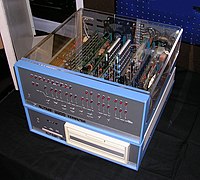



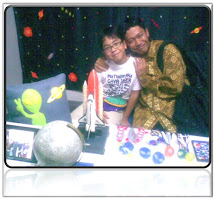










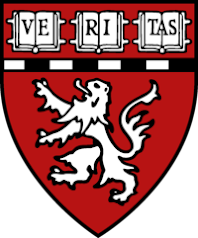


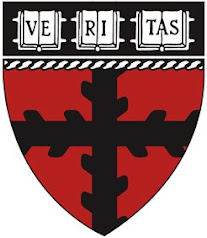
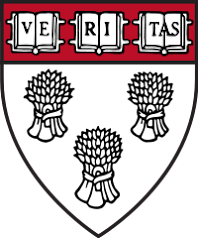

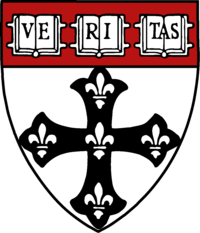

May 11th, 2008 at 9:05 pm
whew, Bill Gates dengan kemampuan serta talenta tinggi mengatakan menyesal bahwa dia merasa rugi tidak meneruskan kuliah dan mendapatkan gelar.
Um, sebenarnya rugi mana bila dibandingkan dia meneruskan kuliah dan meraih gelar? dengan dia yang cepat mengambil langkah menjadi entrepreneurship dari awal?
May 11th, 2008 at 10:30 pm
Ada hal yang tidak diketahui banyak orang tentanh bill getes yaitu nili SAT-nya (Standard aptitude test) atau disni sama dengan SPMB atau UMPTN, nilai om bill adalah 1560 atau 1580 ( sory, saya agak lupa), nilai tertinggi adalah 1600, artinya nilai dia mendekati sempurna, Di amrik sono jika seoranhg anak nilai sat-nya di atas 1400 si anak dianggap anak jenius…
Jadi meskipun bill gates do, tapi dia mempunyai intelektualitas di atas rata2
May 11th, 2008 at 11:39 pm
Sekarang biaya kuliah meningkat sangat pesat. Kualitas fasilitas kuliah rata2 juga meningkat. Namun apakah kualitas kuliahnya juga meningkat? Dan apakah mampu membekali mahasiswa untuk siap bekerja?
(sambil mengingat bahwa banyak perusahaan besar yang memiliki divisi training untuk mempersiapkan fresh graduate bekerja untuk mereka)
May 12th, 2008 at 1:10 am
IMHO, saya lebih suka pendapat salah satu karakter dalam film Jerry Maguire:
“Hey, I don’t have all the answers. In life, to be honest, I failed as much as I have succeeded. But I love my wife. I love my life. And I wish you my kind of success.”
- Dicky Fox in Jerry Maguire
sehingga bagi saya pribadi yang terpenting adalah memanfaatkan seluruh kesempatan, entah saat masih belajar di bangku sekolahan ataupun setelah keluar (entah karena lulus atau DO y :P)